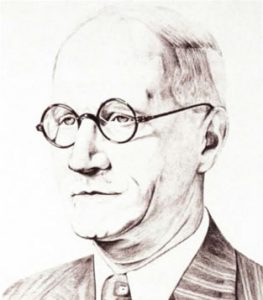Raoul Martin
BOER WAR VETERAN AND ENGINEER
Raoul Martin
In 1932 ESCOM engaged the services of an engineer whose service record stands unique, probably in the world.
Jean Benoit Raoul Martin was born at Port Louis, Mauritius on 15 December 1880 and came to the Transvaal at the age of thirteen and settled in Pretoria, where his eldest sister had married. During the Malabosch campaign of 1894, he served as dispatch rider under the command of General Piet Joubert.
In 1899, during the Anglo-Boer War, he held the post of confidential Post Office messenger, responsible for conveying secret telegrams from the front, to President Paul Kruger.
After the British occupation of Pretoria, he retreated with the Transvaal Government to Machadodorp in the Eastern Transvaal. When President Kruger left for exile in Europe, Martin joined the Staatsartillerie as a telegraphist. He later joined General Louis Botha’s forces at Dalamanutha as Artillerist.
On the morning of 21 August 1901, whilst proceeding on leave with a friend, they were informed that a British column was advancing from Vryheid. They joined forces with a Commando in the vicinity of Hlobane near Vryheid, and shortly thereafter engaged the advance column of the Australian Volunteers. A running battle ensued and lasted well into the afternoon.
In a wild attempt to break through the British lines, he was unsaddled from his horse as the result of a broken stirrup-strap, and taken prisoner.
He was escourted to a POW holding camp near Ladysmith, known as “Ti Town”, before being shipped out, first to Sialkot, and later to Fort Ahmednager in India.
It was here at Amritsar that he met Dr Hjalmar Reitz, eldest son of the former President of the Orange Free State Republic. This friendship lasted for many years, ending only with the death of Reitz.
After signing the Declaration of Allegiance at Amritsar in 1902, he was refused entry into South Africa on the grounds that he was not a Transvaal burger, but a foreign volunteer who fought under the command of the French General, De Villebois.
After unsuccessful attempts at convincing the British War office to the authenticity of his Transvaal burger status, he left India for France. In France, Martin applied to the International Fund in Aid of the Boers for a bursary to study electrical engineering. This request was granted by the Chairman of the Aid Fund, CGS Sandberg, who headed the campaign in France.
Martin completed his studies in 1907 and worked for various companies in the capacity of engineer, before being employed by the Electricity Company of Senegal in West Africa.
He started work at the Dakar power station in 1922, as Manager and Engineer-in-charge. Martin served with this company until he resigned in 1928. His years of service was of the highest order, and Dakar became known as the “City of Light”, a feature unbeknown to the city before his take-over.
Raoul Martin returned to South Africa in 1930 and rewrote the examination for the Government Certificate of Competency. He joined ESCOM on 21 August 1932 and sent to Sabie power Station as Senior Engineer-in-charge.
One of his famous feats was saving the machines when the floods came down, the high water mark is still marked on the rocks.
During the 1930’s, lions wer still found roaming the veld in the Sabie district. Martin wrote to the General Manager, requesting the purchase of a rifle, so that he could ensure the safety of his staff and family from prowling lions.
Raoul Martin retired on 30 June 1962, at the age of 81, and passed away two years later on 6 May 1964. His entire career with ESCOM was spent at the Sabie power Station.





